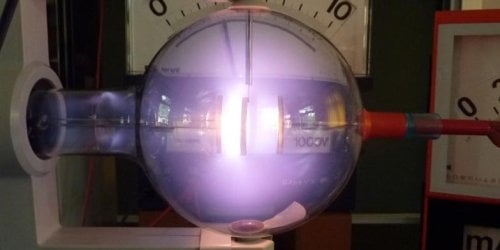- Get link
- X
- Other Apps

The principle of operation of light microscopes and magnifying glasses is based, in addition to the optical properties and refraction properties, that when using optical systems it is impossible to consider objects whose size is smaller than the wavelength of light rays. But scientists are amazing people: they are constantly doing what previously seemed impossible, going beyond the generally accepted framework. And recently they managed to create a “magnifying glass” capable of focusing light on a surface the size of an atom.
Behind the creation of the invention are researchers from the University of Cambridge in the United States and the Center for the Physics of Materials from Spain. The created “magnifying glass”, of course, is not so in the usual sense: it only uses the same principles. And in the hands you will not take it because of too small size. The basis is an electrically conductive nanoparticle, on the surface of which an “optical notch” is formed - a recess whose diameter is equal to the size of the gold atom. This is what makes it possible to focus light on such a small area. The process of observing atoms in a similar way is very laborious and, according to one of the authors of the study, Dr. Felix Benz and Professor Xavier Aizpura,
“We had to cool it all down to a temperature of minus 260 degrees Celsius so that the thermal movement would not prevent us from putting atoms in a given place. The sample on which the pico-trench was created was illuminated with laser light, which allowed us to track the movement of each atom in real time. According to the models we built, individual atoms, ordered in a special way, can act like lightning rods. Only instead of electric charges, they focus the light falling on them. ”

Here is what a prototype of a “magnifying glass” looks like with which one can see atoms
The invention of such a small “magnifying glass” will allow a better study of the structure of atoms, bonds and interactions between them, and will also find wide application in optical-mechanical information storage devices, in which data will be encrypted as parameters of molecules placed inside microscopic cavities.
The article is based on materials .
- Get link
- X
- Other Apps
Comments
Post a Comment